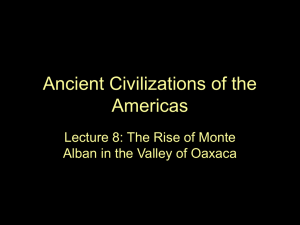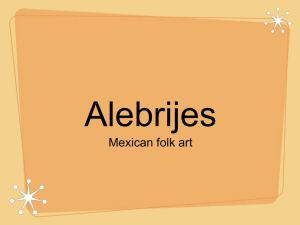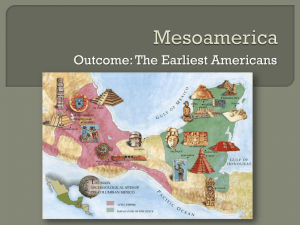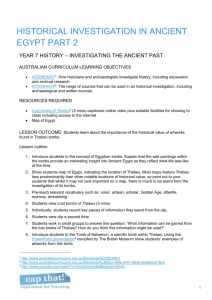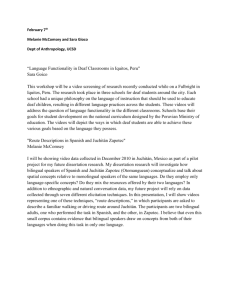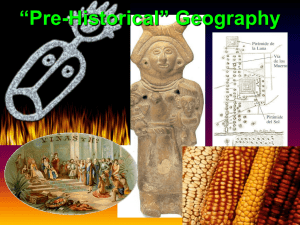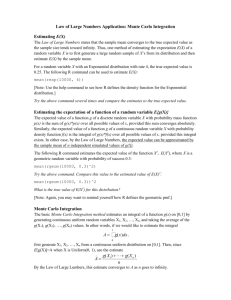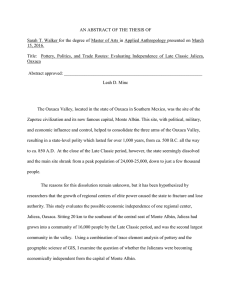Excursion: Monte Albán and Atzompa
advertisement
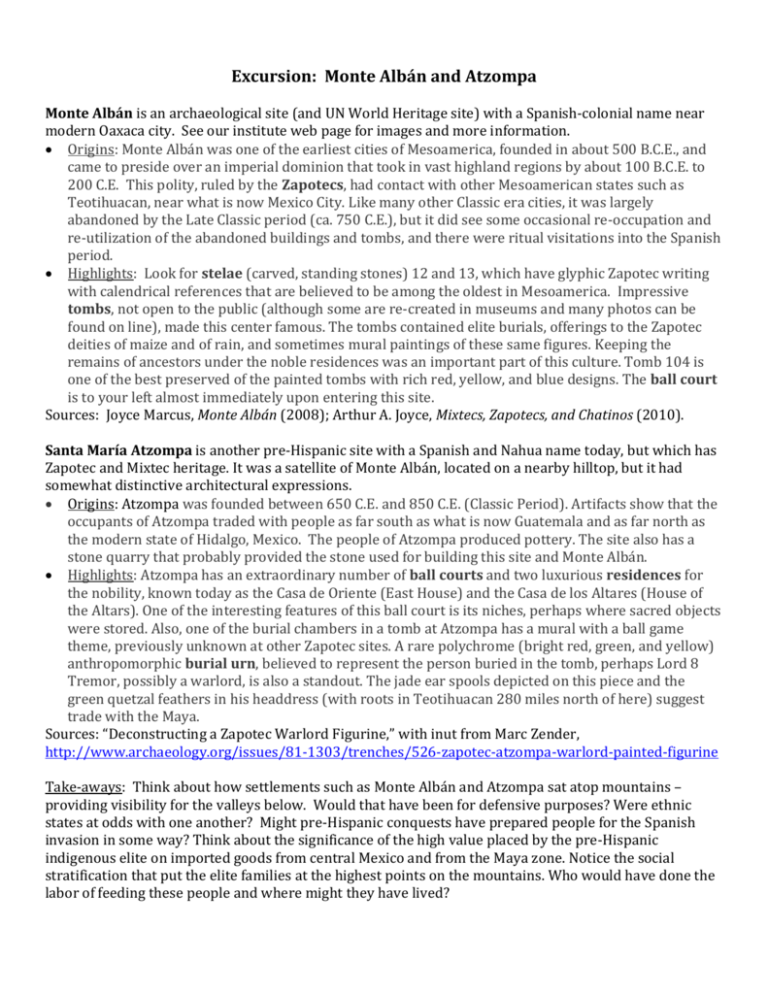
Excursion: Monte Albán and Atzompa Monte Albán is an archaeological site (and UN World Heritage site) with a Spanish-colonial name near modern Oaxaca city. See our institute web page for images and more information. Origins: Monte Albán was one of the earliest cities of Mesoamerica, founded in about 500 B.C.E., and came to preside over an imperial dominion that took in vast highland regions by about 100 B.C.E. to 200 C.E. This polity, ruled by the Zapotecs, had contact with other Mesoamerican states such as Teotihuacan, near what is now Mexico City. Like many other Classic era cities, it was largely abandoned by the Late Classic period (ca. 750 C.E.), but it did see some occasional re-occupation and re-utilization of the abandoned buildings and tombs, and there were ritual visitations into the Spanish period. Highlights: Look for stelae (carved, standing stones) 12 and 13, which have glyphic Zapotec writing with calendrical references that are believed to be among the oldest in Mesoamerica. Impressive tombs, not open to the public (although some are re-created in museums and many photos can be found on line), made this center famous. The tombs contained elite burials, offerings to the Zapotec deities of maize and of rain, and sometimes mural paintings of these same figures. Keeping the remains of ancestors under the noble residences was an important part of this culture. Tomb 104 is one of the best preserved of the painted tombs with rich red, yellow, and blue designs. The ball court is to your left almost immediately upon entering this site. Sources: Joyce Marcus, Monte Albán (2008); Arthur A. Joyce, Mixtecs, Zapotecs, and Chatinos (2010). Santa María Atzompa is another pre-Hispanic site with a Spanish and Nahua name today, but which has Zapotec and Mixtec heritage. It was a satellite of Monte Albán, located on a nearby hilltop, but it had somewhat distinctive architectural expressions. Origins: Atzompa was founded between 650 C.E. and 850 C.E. (Classic Period). Artifacts show that the occupants of Atzompa traded with people as far south as what is now Guatemala and as far north as the modern state of Hidalgo, Mexico. The people of Atzompa produced pottery. The site also has a stone quarry that probably provided the stone used for building this site and Monte Albán. Highlights: Atzompa has an extraordinary number of ball courts and two luxurious residences for the nobility, known today as the Casa de Oriente (East House) and the Casa de los Altares (House of the Altars). One of the interesting features of this ball court is its niches, perhaps where sacred objects were stored. Also, one of the burial chambers in a tomb at Atzompa has a mural with a ball game theme, previously unknown at other Zapotec sites. A rare polychrome (bright red, green, and yellow) anthropomorphic burial urn, believed to represent the person buried in the tomb, perhaps Lord 8 Tremor, possibly a warlord, is also a standout. The jade ear spools depicted on this piece and the green quetzal feathers in his headdress (with roots in Teotihuacan 280 miles north of here) suggest trade with the Maya. Sources: “Deconstructing a Zapotec Warlord Figurine,” with inut from Marc Zender, http://www.archaeology.org/issues/81-1303/trenches/526-zapotec-atzompa-warlord-painted-figurine Take-aways: Think about how settlements such as Monte Albán and Atzompa sat atop mountains – providing visibility for the valleys below. Would that have been for defensive purposes? Were ethnic states at odds with one another? Might pre-Hispanic conquests have prepared people for the Spanish invasion in some way? Think about the significance of the high value placed by the pre-Hispanic indigenous elite on imported goods from central Mexico and from the Maya zone. Notice the social stratification that put the elite families at the highest points on the mountains. Who would have done the labor of feeding these people and where might they have lived?
